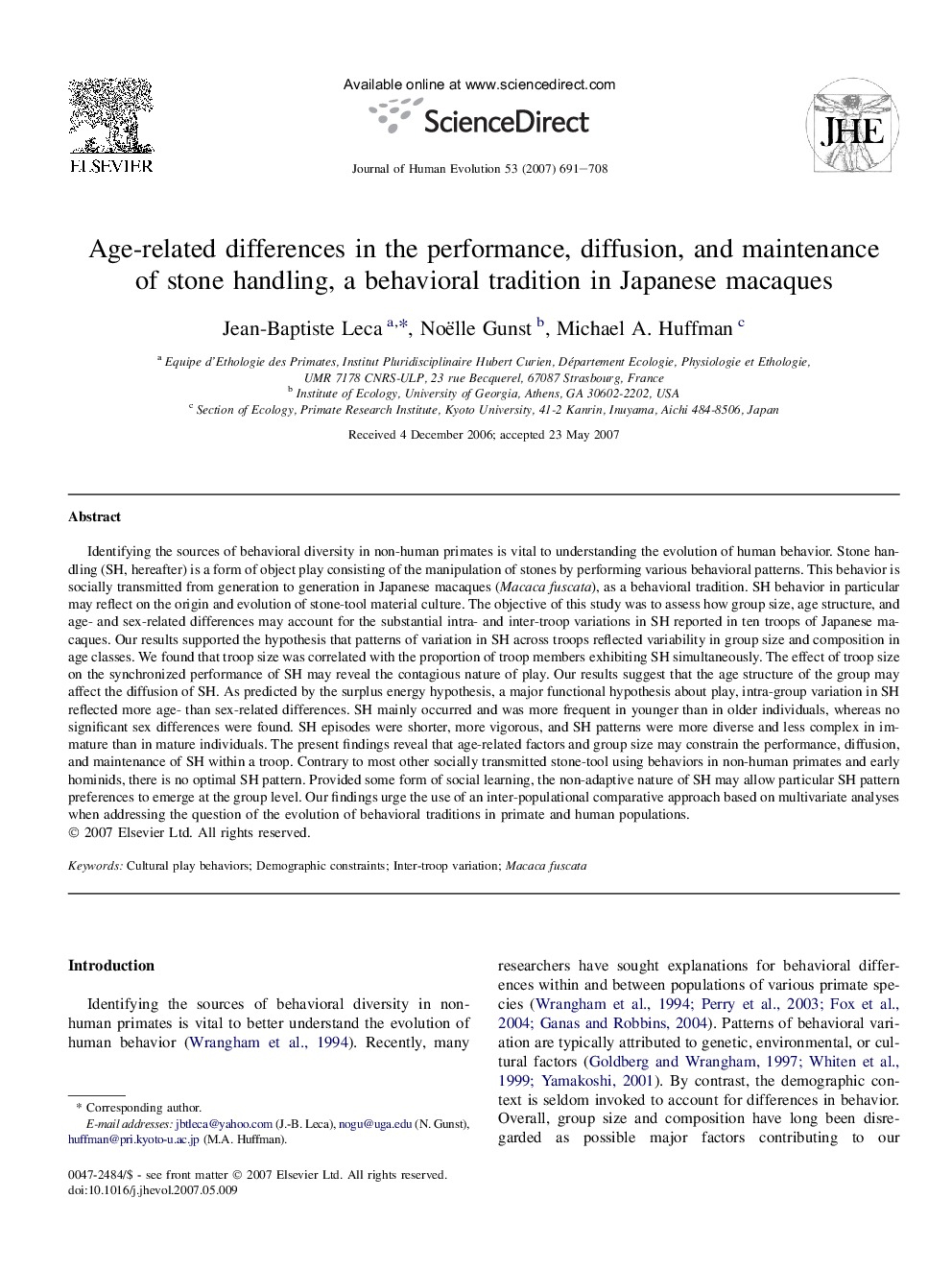| کد مقاله | کد نشریه | سال انتشار | مقاله انگلیسی | نسخه تمام متن |
|---|---|---|---|---|
| 4556943 | 1329514 | 2007 | 18 صفحه PDF | دانلود رایگان |

Identifying the sources of behavioral diversity in non-human primates is vital to understanding the evolution of human behavior. Stone handling (SH, hereafter) is a form of object play consisting of the manipulation of stones by performing various behavioral patterns. This behavior is socially transmitted from generation to generation in Japanese macaques (Macaca fuscata), as a behavioral tradition. SH behavior in particular may reflect on the origin and evolution of stone-tool material culture. The objective of this study was to assess how group size, age structure, and age- and sex-related differences may account for the substantial intra- and inter-troop variations in SH reported in ten troops of Japanese macaques. Our results supported the hypothesis that patterns of variation in SH across troops reflected variability in group size and composition in age classes. We found that troop size was correlated with the proportion of troop members exhibiting SH simultaneously. The effect of troop size on the synchronized performance of SH may reveal the contagious nature of play. Our results suggest that the age structure of the group may affect the diffusion of SH. As predicted by the surplus energy hypothesis, a major functional hypothesis about play, intra-group variation in SH reflected more age- than sex-related differences. SH mainly occurred and was more frequent in younger than in older individuals, whereas no significant sex differences were found. SH episodes were shorter, more vigorous, and SH patterns were more diverse and less complex in immature than in mature individuals. The present findings reveal that age-related factors and group size may constrain the performance, diffusion, and maintenance of SH within a troop. Contrary to most other socially transmitted stone-tool using behaviors in non-human primates and early hominids, there is no optimal SH pattern. Provided some form of social learning, the non-adaptive nature of SH may allow particular SH pattern preferences to emerge at the group level. Our findings urge the use of an inter-populational comparative approach based on multivariate analyses when addressing the question of the evolution of behavioral traditions in primate and human populations.
Journal: Journal of Human Evolution - Volume 53, Issue 6, December 2007, Pages 691–708